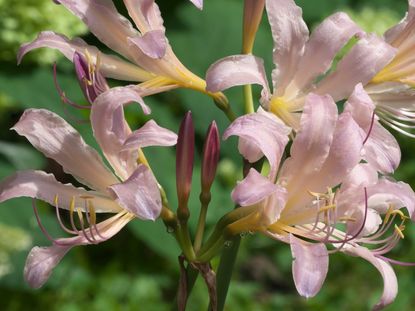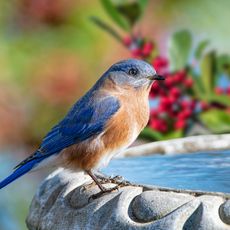Lycoris Care - How To Grow The Lycoris Flower In The Garden


There are many common names for the Lycoris squamigera, most of which accurately describe this charming, fragrant, flowering plant with an unusual habit. Some call it Resurrection lily; others refer to the showy blooms of the Lycoris flower as the surprise lily or as the naked lady. Read on for more information on this plant.
The Surprising Lycoris Lily
The Lycoris bulb will indeed surprise you if you are not familiar with her ways. Lycoris first presents a lush display of draping foliage, similar to that of the daffodil. A closer look reveals rounded leaf tips on attractive, arching leaves. Just when you expect buds to develop, the foliage dies back, and the unaware gardener can feel robbed. However, the Lycoris squamigera lies in wait for just the right time to bloom. Lycoris care does not involve the removal of the dying foliage from the plant. The nitrogen-rich foliage disintegrates to nourish the Lycoris bulb below the soil. When foliage of the Lycoris squamigera dies back in spring, the gardener may wish to plant a dainty, low-growing groundcover to add to the display of the Lycoris flower that will bloom from July to August. Lycoris squamigera appears quickly atop a sturdy stem called a scape. Scapes rise quickly from the soil and bear clusters of six to eight of the showy, pink Lycoris flower. Scapes reach 1 to 2 feet (30.5-61 cm.) and fragrant blooms of the Lycoris flower last for several weeks.
Tips for Growing Lycoris
Plant Lycoris bulbs in a full sun location for fullest bloom. Blooms also occur in part sun areas. Well-drained soil is necessary for a long and productive display. Plant Lycoris bulbs with the tip just below soil level, more deeply in colder areas. From the Amaryllis family, the Lycoris squamigera bulb is the most cold-hardy of the family and grows in USDA gardening zones 5 through 10. Plan for the long-term placement of the Lycoris bulb, as it does not like to be disturbed once planted. The Lycoris lily is a showy addition to the flower garden or when landscaping a partially shaded natural area and is deer-resistant. Lycoris bulbs return for several years. If blooms seem diminished, it may be time for division, which is best accomplished after the strappy foliage dies back in spring. Dividing Lycoris bulbs every few years produces more of these charming plants. Replant bulbs quickly into beds where the continued beauty of the flower can be seen and smelled. The Lycoris flower is not a drought-resistant specimen and will benefit from regular watering unless dormant. Dormancy occurs in winter and between foliage die back to bloom time in spring to summer. Do not fertilize Lycoris bulbs soon after planting; wait for a month or so to avoid burning the newly forming roots. Two different fertilizers benefit the Lycoris flower and foliage; one that is high in potassium in late autumn followed by a nitrogen-rich fertilizer in early spring. This encourages growth in foliage, thereby encouraging bigger blooms of the Lycoris flower.
Gardening tips, videos, info and more delivered right to your inbox!
Sign up for the Gardening Know How newsletter today and receive a free download of our DIY eBook "Bring Your Garden Indoors: 13 DIY Projects For Fall And Winter".

Becca Badgett was a regular contributor to Gardening Know How for ten years. Co-author of the book How to Grow an EMERGENCY Garden, Becca specializes in succulent and cactus gardening.
-
 Gifts For Bird Lovers, Birders and Birdies To Attract More Feathered Friends To Your Yard!
Gifts For Bird Lovers, Birders and Birdies To Attract More Feathered Friends To Your Yard!If you’re looking to bring more birdies to your garden, these gifts for bird lovers should definitely be on your wish list. Grab some avian attractions to get your gardens all aflutter
By Janey Goulding
-
 Elegant Exotics: 8 Beautiful Amaryllis Varieties That Will Brighten Any Holiday Display
Elegant Exotics: 8 Beautiful Amaryllis Varieties That Will Brighten Any Holiday DisplayWhether red, pink, white or variegated, the right amaryllis varieties can enhance any living space, especially during the holidays. We round up eight of the most exquisite
By Bonnie L. Grant